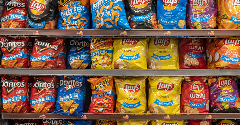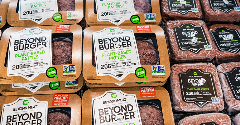News
Beyond ingredients: Food processing as a tool for cleaner labels
12 Jun 2018Ingredients come first when companies think about developing clean label foods and drinks, but certain processing technologies also should be considered part of the clean label toolbox.

People have been processing foods for thousands of years: cooking, fermenting, drying, freezing, preserving and extracting. Yet when consumers talk about “processed food”, often they refer to products that should be eaten in moderation, if not totally avoided. For many, food processing does not fit with the concept of natural, wholesome, clean label foods.
However, the idea of clean label processing is beginning to gain ground, whether as a way to replace undesirable ingredients, or as a way to support ingredient changes.
One of the biggest challenges for clean label foods has been finding ways to keep food safe and attractive while retaining a reasonable shelf life, without using artificial preservatives. Apart from natural ingredients for preservation, some companies have looked to natural processes to extend the shelf life of their products instead, such as high pressure processing (HPP), which can extend shelf life by a factor of two to ten. It deactivates a range of common pathogens, such as salmonella, listeria and microorganisms associated with spoilage, while leaving smaller molecules like vitamins intact, and it has no impact on taste and texture. HPP is widely used for fresh juices, but can also be used for soups, sauces, ready meals, dips, meat and fish.
Similarly, the pulsed electric field (PEF) process uses a high voltage electric pulse to break the cell walls within a food product and destroy harmful microbes. Campden BRI is among the companies offering processes like HPP and PEF to ensure food safety, but such processes may provide additional benefits that fit with demand for cleaner labels. The organisation found that using PEF on potatoes to be used for chips, for example, led to sweeter tasting chips without any additional oil absorption.
Clean label processes can be used to improve products’ ingredient lists in other ways too. TNO Innovation has developed a technique using superheated steam, for example, that can modify ingredients like starch or flour to improve their functionality, and can be used to finish frying certain products to reduce total fat content.
Fermentation is another process being used to produce established ingredients in a way that consumers may consider more natural, such as sweeteners or preservatives. And certain processing technologies may give products the added bonus of a premium positioning, such as cold pressing or cold brewing for juices, vegetable oils, teas and coffees, among others.
When developing clean label products, manufacturers must contend with a rapidly evolving concept that encompasses allergens, artificial ingredients, animal welfare, responsible sourcing and sustainability. Consumer expectations have multiplied as the clean label trend has matured. Therefore, manufacturers should take a multifaceted approach that takes into account all aspects of ingredient sourcing and formulation – including processing.
Related news

PepsiCo formulates ‘naked’ Cheetos and Doritos products
31 Dec 2025
US food giant PepsiCo has launched its Simply NKD range, a move it says reimagines its popular products with new formulations free from artificial flavours, dyes, and colours.
Read more
Debate over ban on ‘meaty’ names for plant-based products reaches stalemate
26 Dec 2025
The debate over a ban on plant-based products using “meaty” terms has reached a stalemate, leaving manufacturers in limbo and still facing overhauls to their marketing and packaging.
Read more
Has ‘clean’ had its day?
22 Dec 2025
Wielding clean-label positioning and fortification as marketing levers is a dangerous strategy, and brands would be better off explaining the hows and whys of the ingredients in their products, say experts.
Read more
Pioneers of circular plastic packaging push for new policies
18 Dec 2025
Some of the world’s largest food and drink companies have grown frustrated at investing in circular packaging systems, as the majority “wait on the sidelines”.
Read more
Whole Foods Market forecasts fibre frenzy for 2026
11 Dec 2025
Whole Foods Market has released its top 2026 trends, predicting that a fibre frenzy will take place next year as health-conscious consumers seek out nutritious, filling options.
Read more
Sorghum emerges as better-for-you hero ingredient
9 Dec 2025
With the launch of Novak Djokovic’s sorghum-based brand, the grain’s popularity in the better-for-you snacking sphere is on the rise, thanks to its nutritional and sensory properties.
Read more
Innovation promise in 'maturing' plant-based dairy alternatives market
8 Dec 2025
Plant-based dairy is a maturing market that still faces significant hurdles around taste, functionality, nutrition, and price, but industry is innovating fast, according to experts speaking at Fi Europe.
Read more
Turning global trade challenges into opportunities
4 Dec 2025
While our food innovation ecosystem is in a healthy place, certain barriers persist. A panel of experts at Fi Europe shared their ideas and strategies for overcoming these, to fully unleash Europe’s potential.
Read more
Celebrating the winners of the Fi Europe Innovation Awards 2025
3 Dec 2025
Food industry stakeholders celebrated as the winners of the Fi Europe Innovation Awards were announced at a ceremony in Paris.
Read more
Yuka’s food scanning app helps consumers make healthier choices
2 Dec 2025
Global food scanning app Yuka helps consumers understand the content of their shopping baskets and shapes producers’ reformulation plans.
Read more